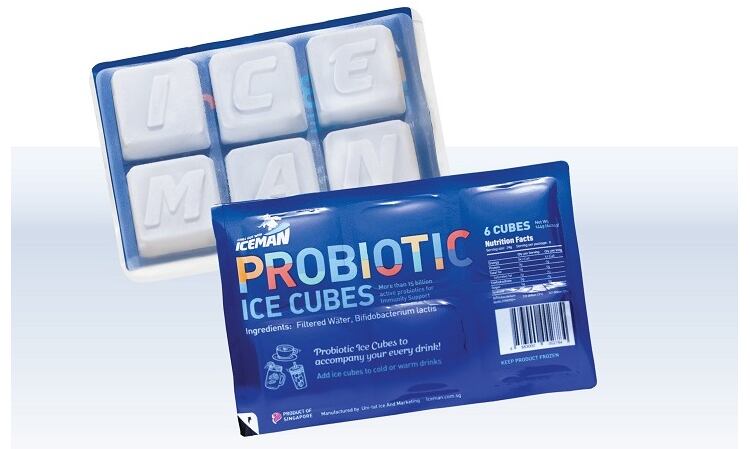Infant food pouches contain similar amounts of energy, vitamin B12, free sugars, and added sugars to other forms of commercial infant foods, however, food pouches contained considerably more total sugars.
In addition, infant food pouches were often found to not be fortified with iron, compared to other infant products such as cereals.
According to the New Zealand Ministry of Health, the most important nutrients during the complementary feeding period are energy, iron, zinc and vitamin C.
The aim of complementary feeding is to transition a six month-old infant from a milk diet to eating solid foods by approximately 24 months of age.
In retail, complementary foods come in diverse forms, such as pouches, jars, and bowls.
Research on the nutritional quality of pouches compared to other forms of commercial infant foods has not been undertaken in New Zealand, and little has been published about the nutritional quality of pouches internationally.
There are also no studies on free sugars or added sugars content of such foods.
So, researchers from the University of Otago, New Zealand sought to address this gap, through a cross-sectional survey of infant foods sold in supermarkets between 2019 to 2020.
“Previous studies have reported the total sugars content and the percentage of energy from total sugars in pouch foods, but none have reported their free or added sugars content. Given the popularity and wide availability of pouches on the commercial infant food market, it is important to examine their nutritional quality,” they wrote in the journal Nutrients.
Data collection
Information on 266 infant foods from four major supermarkets in New Zealand (New World, PAK’nSAVE, Countdown, FreshChoice) was collected.
Photographs were taken of the front of the packet, ingredient list, and nutrition information panel of each food.
Infant formulas were excluded because they are regulated by a separate standard of the Australia New Zealand Food Standards Code.
Foods were classified into five formats, including pouches, cans/dips/jars, dry cereals, snack foods and tray/bowl meals. Of the 266 foods, 133 were food pouches.
They were also divided into eight food groups, namely snack food, meat and fish, legume, breakfast cereal, dairy, vegetable, fruit, and “cereal, grains and pasta’.
The majority of pouches were “fruit” (36.1%), followed by “vegetable” (21.1%) and “dairy” (18.0%).
Nutrient assessment was performed using FoodWorks, a nutrient analysis software designed for use in Australia and New Zealand.
This is the first study studying “free sugars” (WHO definition) and “added sugars” (US FDA definition) content in commercial infant foods.
Energy
The current study found that food in pouches had a similar energy content to other forms of commercial infant foods.
Vitamin B12 levels in infant food pouches were also similar to other formats, where concentration is typically low.
The recommended intake for vitamin B12 for infants aged 0–6 months is 0.4 µg/day, however, no pouches targeted at infants in the 4–6 month age group contained vitamin B12, and even pouches targeted at older infants in the 12+ month age group provided only 0.02 µg/100 g.
Among snack products (non-pounches), none of the products contained any vitamin B12.
Infants require a reliable source of vitamin B12, usually be obtained from breast milk or infant formula, hence researchers said commercial infant foods whether pounces or non-pounces cannot be relied to supply this.
Iron
The iron content of all forms of commercial infant foods was very low, except for prepared “dry cereals”, which were all fortified with iron, containing up to 10mg/100g.
Under the Australia New Zealand Food Standards Code, “cereal-based foods” (foods containing 70% or more cereal) suitable for infants are required to be fortified with iron.
Pouches on average contained an average of 0.3 mg/100 g of iron, and none were fortified with iron.
“Infant food pouches are not fortified with iron because their cereal content is diluted to less than 70% as they are pre-prepared, and because water-soluble iron compounds can cause undesirable changes in taste, colour, and texture, particularly in foods that are stored for extended periods of time, such as pouch foods,” researchers explained.
Iron requirements increases from 0.2 mg/day at 0 to 6 months of age to 7 mg/day at 7 to 12 months of age.
Total, free and added sugars
Infant food pouches contained more total sugars than non-pouches (8.4 g/100 g vs. 2.3 g/100 g).
Pouches in the “fruit”, “dairy”, and “vegetable” food groups contained the most total sugars (median 11.8 g/100 g, 8.5 g/100 g, and 6.8 g/100 g respectively).
Researchers explained that adding sweet ingredients such as fruit and sweet vegetables to pouches may improve palatability and mask more savoury vegetable tastes.
“This is a concern because repeated exposure to sweet complementary foods may lead to infants being accustomed to consuming sweetened infant foods frequently, which could have health implications like unhealthy weight gain and dental caries.”
For free and added sugars, it was a different case. Despite high total sugar levels, pouches, on average, did not contain any free or added sugars.
About 79.7% of pouches contained less than 1.0 g/100 g of free sugars and 90.2% contained less than 1.8 g/100 g of added sugars.
The “dairy” food group contained the most free sugars and added sugars, which was similar for pouch and non-pouch foods.
Researchers advise parents and caregivers to minimise intake of sweet snacks and dairy foods because of their sugars content, and to ensure that if commercial infant foods are being used regularly, products from a range of food groups are offered, and not just fruit products.
Future concerns
As nutrition information panels for food products sold in New Zealand are required to report total sugars content only, the different definitions of sugars used in nutrition research studies and in dietary guidelines make comparisons between sugar content, sugar intake, and sugar recommendations difficult.
In New Zealand, there is no maximum limit to the amount of added sugars that commercial infant foods may contain.
Given the widespread concern about the sugar content of commercial infant foods, a universal definition of sugars that is appropriate for the infant diet is urgently needed so that sugars content and intakes can be monitored more effectively, researchers added/
Source: Nutrients
https://doi.org/10.3390/nu13020657
“Energy, Sugars, Iron, and Vitamin B12 Content of Commercial Infant Food Pouches and Other Commercial Infant Foods on the New Zealand Market”
Authors: Ioanna Katiforis, et al.




